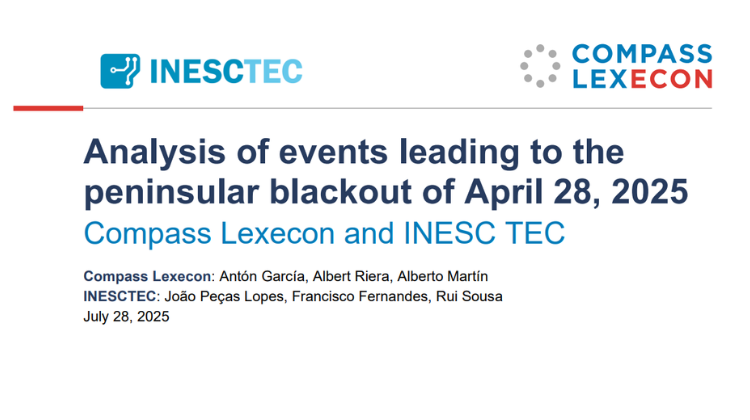On 28 April 2025, the Iberian Peninsula experienced a massive blackout that affected both Spain and Portugal. A report commissioned by the Asociación de Empresas de Energía Eléctrica (aelėc), prepared by Compass Lexecon and INESC TEC, identifies the main cause of the blackout as insufficient capacity to absorb reactive power and poor operational management of the system by Red Eléctrica de España (REE).
“I believe this report indeed identifies the sole and ultimate cause of the blackout: a lack of reserve for voltage control and poor line management (and interconnection as well), which consumed what little voltage management reserve was available,” states Jorge Antonio González Sánchez, an expert in energy R&D, on LinkedIn.
The analyst notes that on 28 April there were only 4,900 MVAr of reactive power absorption capacity available in Spain, compared to a total capacity of 13,000 MVAr. This figure represents just 60% of the average margin observed in 2025, which stands at 5,800 MVAr.
The situation was even more critical in the south of the country. According to the report, in Andalusia there were only 117 MVAr available compared to a potential of 1,550 MVAr, that is, only 7.5% of the region’s available capacity.
The report also documents that on the same day, REE carried out transmission line operations that increased reactive power generation by approximately 2,400 MVAr, which “consumed a large part of the 3,300 MVAr margin that the system had”.
In the southwest, the document highlights, this manoeuvre completely depleted the system’s voltage control capacity, triggering the blackout.
The operator’s actions were intended to contain frequency oscillations detected from 12:03 CET. However, the reconnection of 11 lines increased reactive power generation precisely in already stressed zones, exacerbating overload and reducing room for manoeuvre.
Moreover, the document emphasises that at 12:33 CET, frequency dropped below 49.8 Hz, activating automatic disconnection mechanisms which, nevertheless, failed to prevent the system’s total collapse. It is estimated that more than 10 GW of load were disconnected within seconds.
As an immediate measure following the blackout, REE coupled more conventional generation, which helped reduce voltage oscillations and stabilise the system. The report concludes that, had this measure been taken on the morning of 28 April, the blackout could have been prevented.
Finally, it warns that several questions remain unanswered due to incomplete information from the system operator, including why REE prioritised slow-starting combined cycle units instead of available hydroelectric plants, and why a key unit in Andalusia, declared unavailable the previous night, was not replaced.
The case highlights the urgent need to improve the regulatory framework for voltage control in Spain, equip renewable generation with dynamic capabilities, and strengthen the operational transparency of the national electricity system.
1754509403299





























